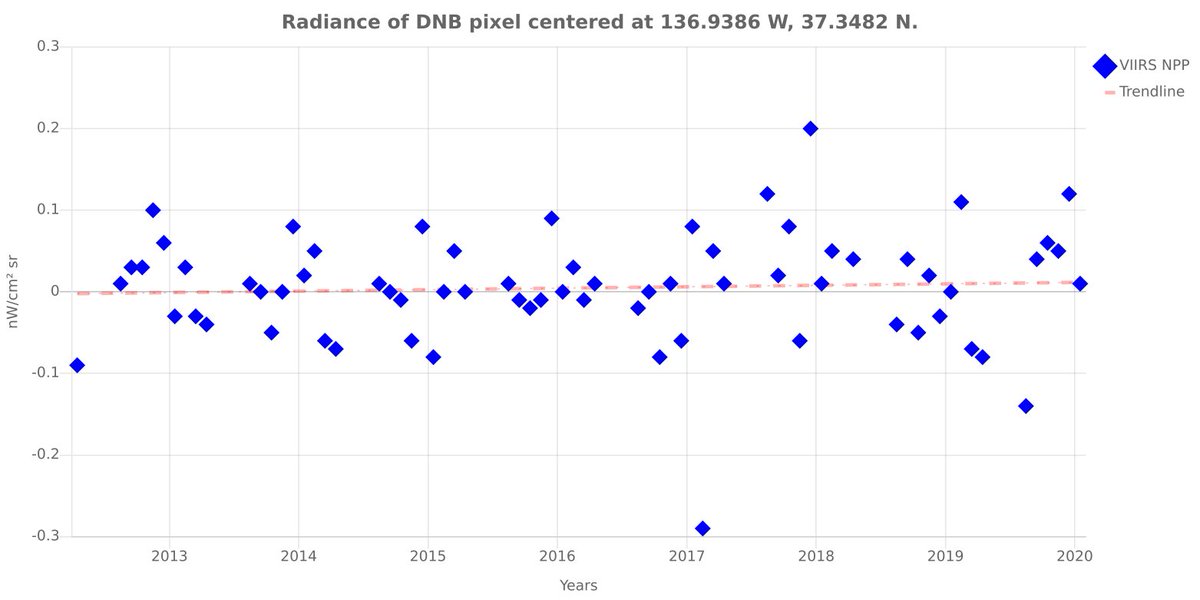
We’ve just published the coolest experiment I’ve done in years: doi.org/10.1177/147715…
Want to know why the brightness of this city is different in these two satellite images? Read the thread 👇🏾
Want to know why the brightness of this city is different in these two satellite images? Read the thread 👇🏾
First some background: I study artificial light in the outdoor environment. I'm interested in where it comes from, where it goes, what impact it has, and what we can do about #LightPollution.
The night face of Earth is radically different from when life evolved. In proportional terms, it's one of the most dramatic physical changes humans have made to the environment. 
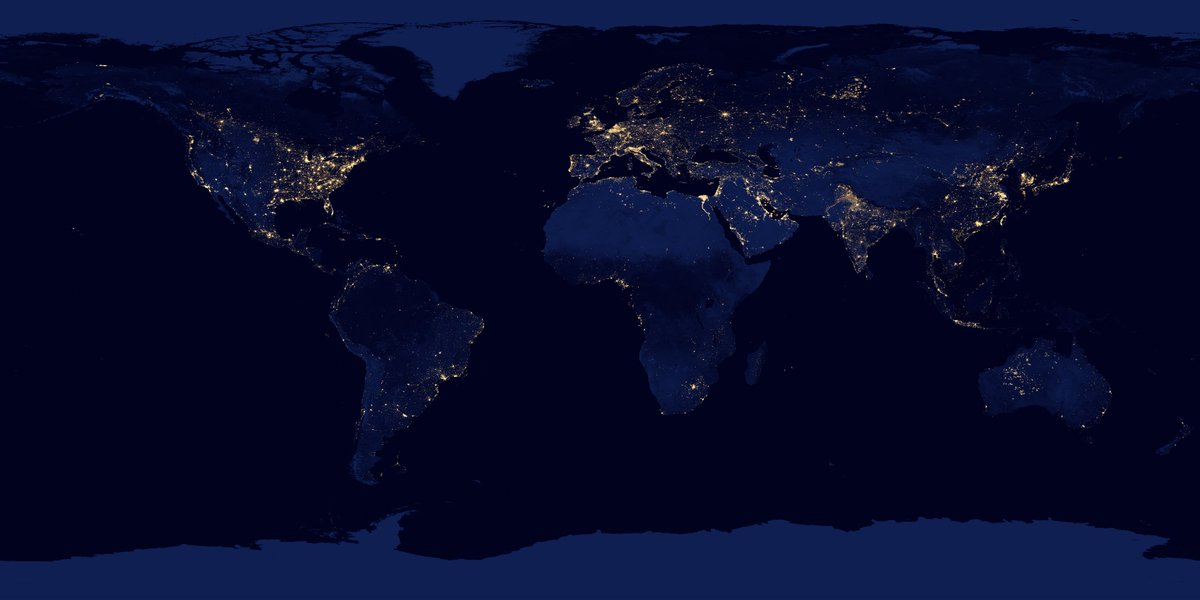
Earth's nights started getting much brighter when electric light was invented. Every time we invent more efficient lighting technology, humans use more light. It's been going on for centuries: ies.tandfonline.com/doi/abs/10.158…
And with the development of LEDs, Earth is still getting brighter, to the tune of about 2% per year. advances.sciencemag.org/content/3/11/e… 
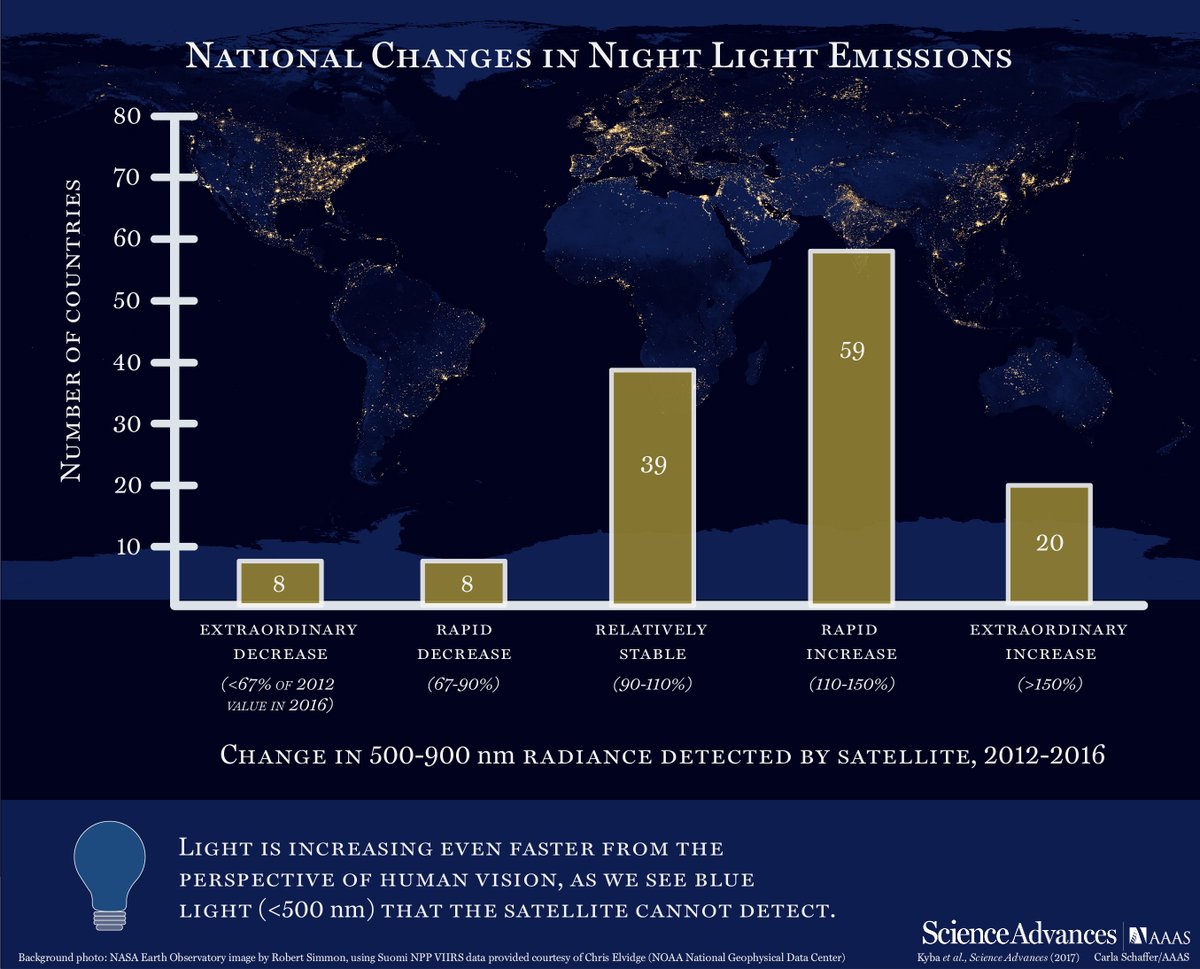
People often ask me where the new light is coming from. Is it new or changed streetlights? New developments? Advertisements? Unfortunately, no one really knows.
We don't know how much of the current light emissions from from each different type of source, let alone how the different sources are changing. That's the starting point for the new paper.
In the ideal case, what a scientist would like to do is turn off certain lights while leaving everything else constant. So first streetlights, then shop windows, then advertisements, then car headlights etc.
Believe it or not, the US government actually did this back during World War 2!
There was a problem that German U-boats were sinking merchant ships, and they were viewing the dark shapes of the ships silhouetted against the skyglow from cities inland.
So the army had a huge program to try to understand skyglow, which I think was only recently declassified. apps.dtic.mil/dtic/tr/fullte… 

Incidentally, the military's recommendations are pretty much the same as what @IDADarkSky promotes today: Shield lights so they don't shine upwards, only use as much light as necessary, and only illuminate things when necessary. 
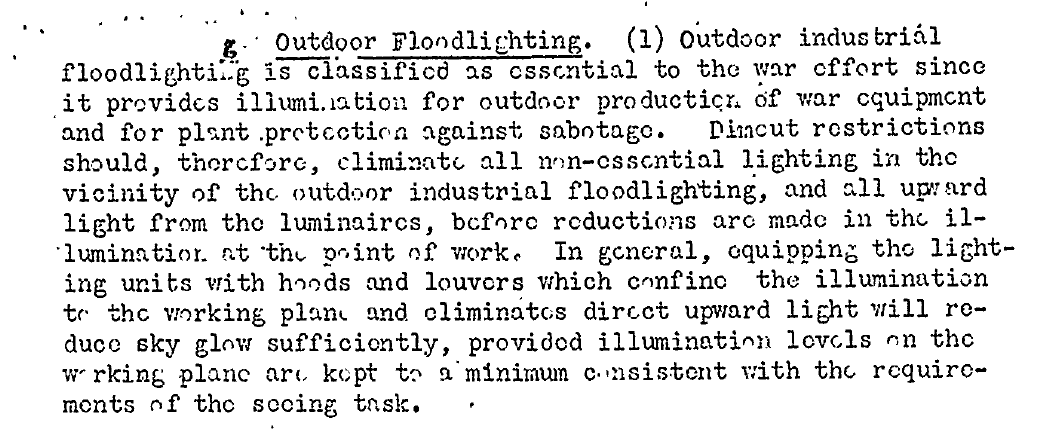
Getting back to the main story, the US military actually went to a town in Massachusetts and turned on and off all the different types of sources to understand how much each contributed to skyglow! 
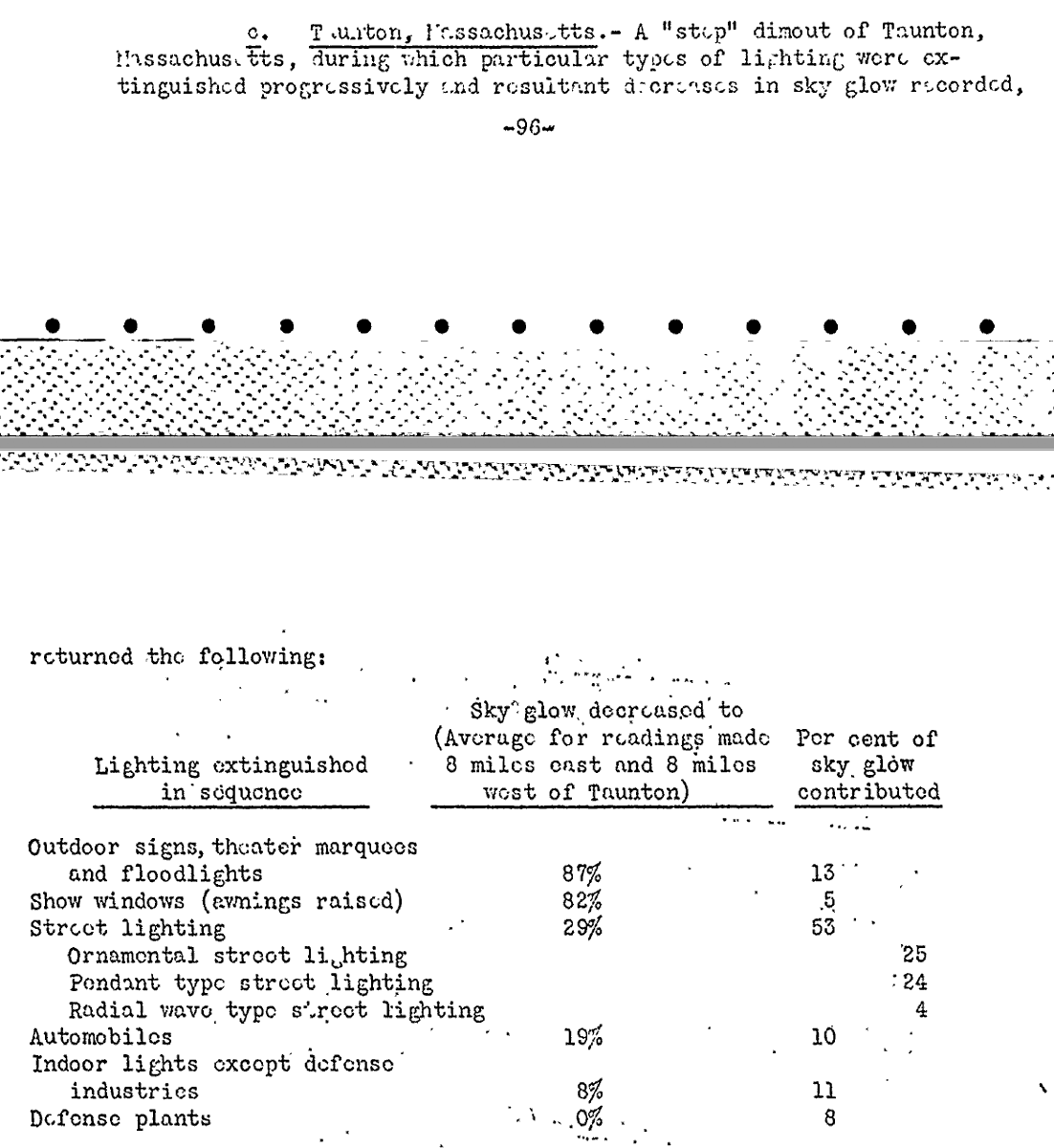
Thankfully, we're no longer experiencing world war (way to go European Union!). But that means that there's no way on Earth a big city is going to let us turn off all of the lights of some type to see what impact it has.
Here's the idea behind the new paper: You don't actually have to turn off all the lights to understand how much comes from each source. With #SmartCity dimmable LED streetlights and a control system, you can change the light output of the city by a known fraction.
If you assume that the other lights in the city stay constant (and why wouldn't they?), then you can extrapolate down to what the light output of the city would be if the lights were turned off, rather than dimmed. 
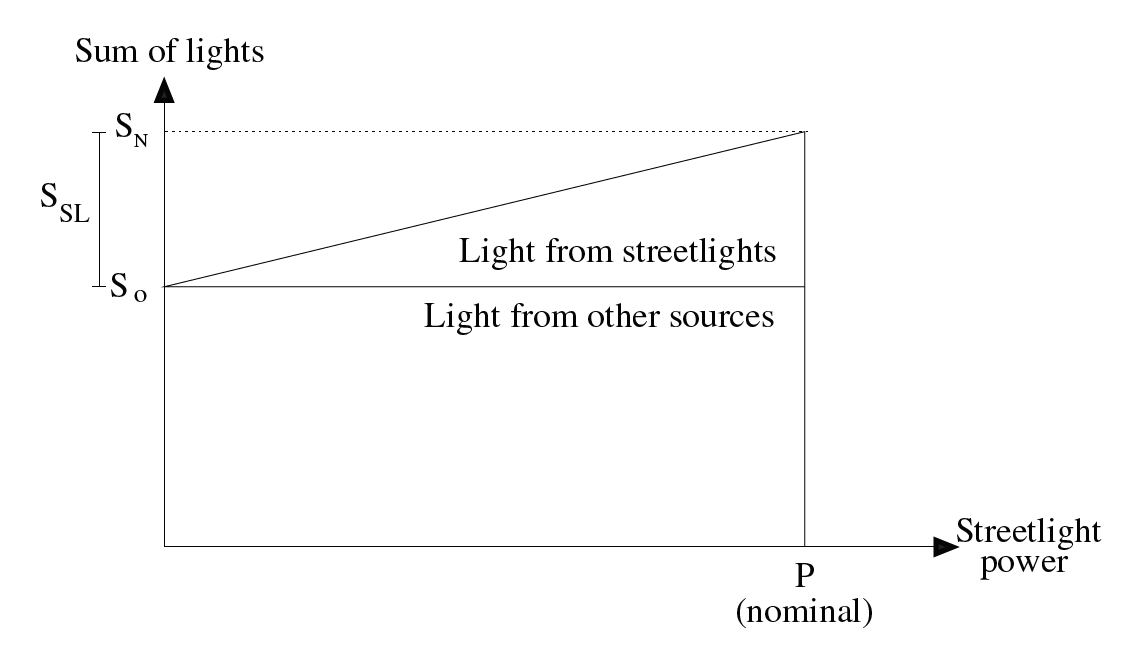
So that's what we did! The @cityoftucson in USA updated their lighting system to LEDs a few years back, and installed a control system so that they could change the light output before and after midnight. sciencedirect.com/science/articl…
On a normal light, their lights start at 90% of maximum, and at midnight they dim to 60%.
A few hours later (typically around 2:30 local time or so), the Suomi NPP satellite flies over, and the VIIRS radiometer takes an image of the city's lights with it's "Day Night Band". (Suomi is the satellite that made the image of Earth at Night) 
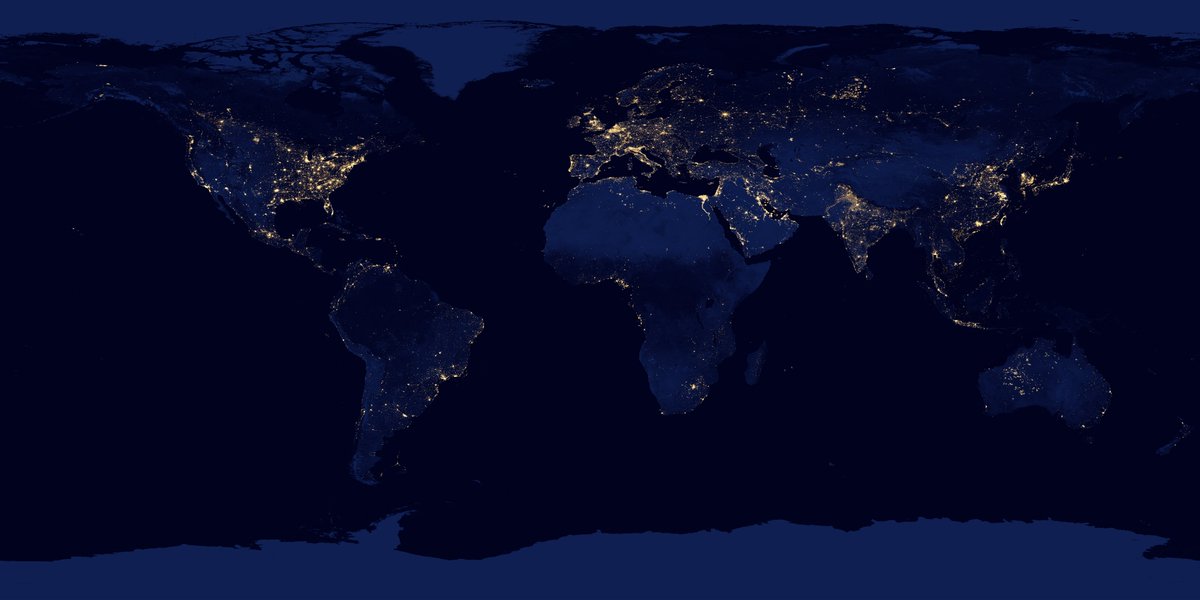
So we asked the city to change the light setting after midnight. On some nights they brightened up to 100%, and on others they dimmed down to 30%. (Thanks to study co-author @JohnBarentine for the images!)
So now is a good time to give HUGE THANKS to the @cityoftucson (and especially Jessie Sanders) for agreeing to do this and arranging the test!
So what did we see? Here's the main result from the paper, (with a few minor adjustments to make it easier to understand). 

Tucson ran the test over 10 days, and of those 4 were clear nights were the satellite got photos, three on dim nights, and one on a bright night. We also had two "normal" nights outside of the test. Those are the blue dots in the figure.
The image is scaled so that 100% is what we expect Tucson to look like on a normal night. You can see that when the city dims the streetlights, the city gets darker. But not that much darker... Even if they turned them off there would still be a lot of light.
And that's our main result: City of Tucson LED streetlights are responsible for about about 13% of the total emissions seen by satellites after midnight.
If you add in a few other City of Tucson lights and streetlights operated by other people in the city, then we estimate 16%. If Tucson didn't dim their streetlights, then the contribution would rise to 16% and 21% respectively.
So here's the most important point:
For a city with a well-designed streetlight system, the vast majority of the light the city emits comes from other light sources.
(Advertisements, lit facades, security lighting, sports lighting, car headlights, light from windows, etc.)



For a city with a well-designed streetlight system, the vast majority of the light the city emits comes from other light sources.
(Advertisements, lit facades, security lighting, sports lighting, car headlights, light from windows, etc.)

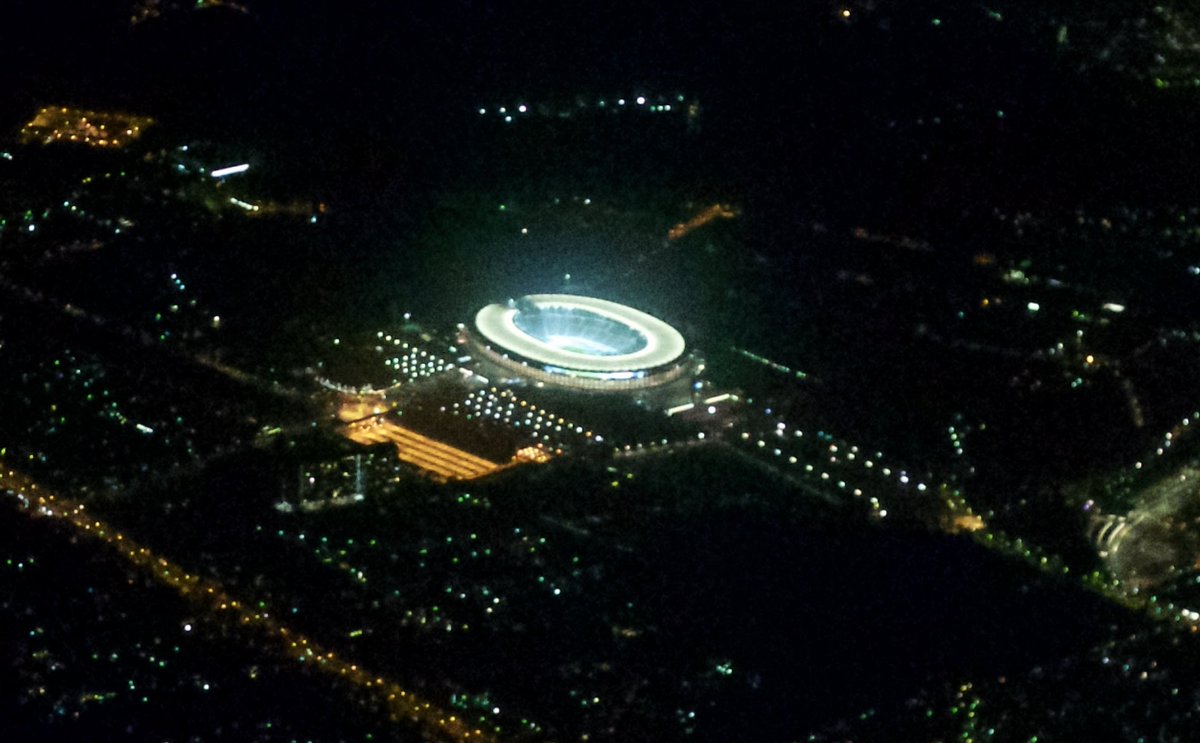
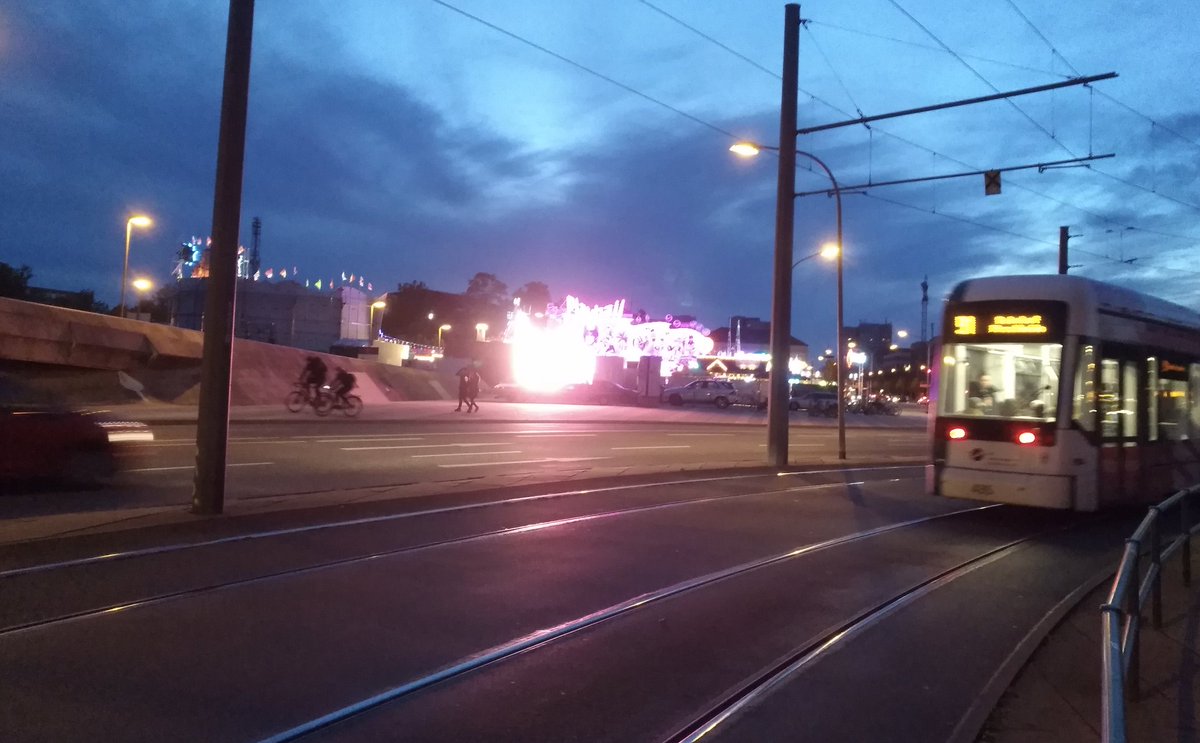
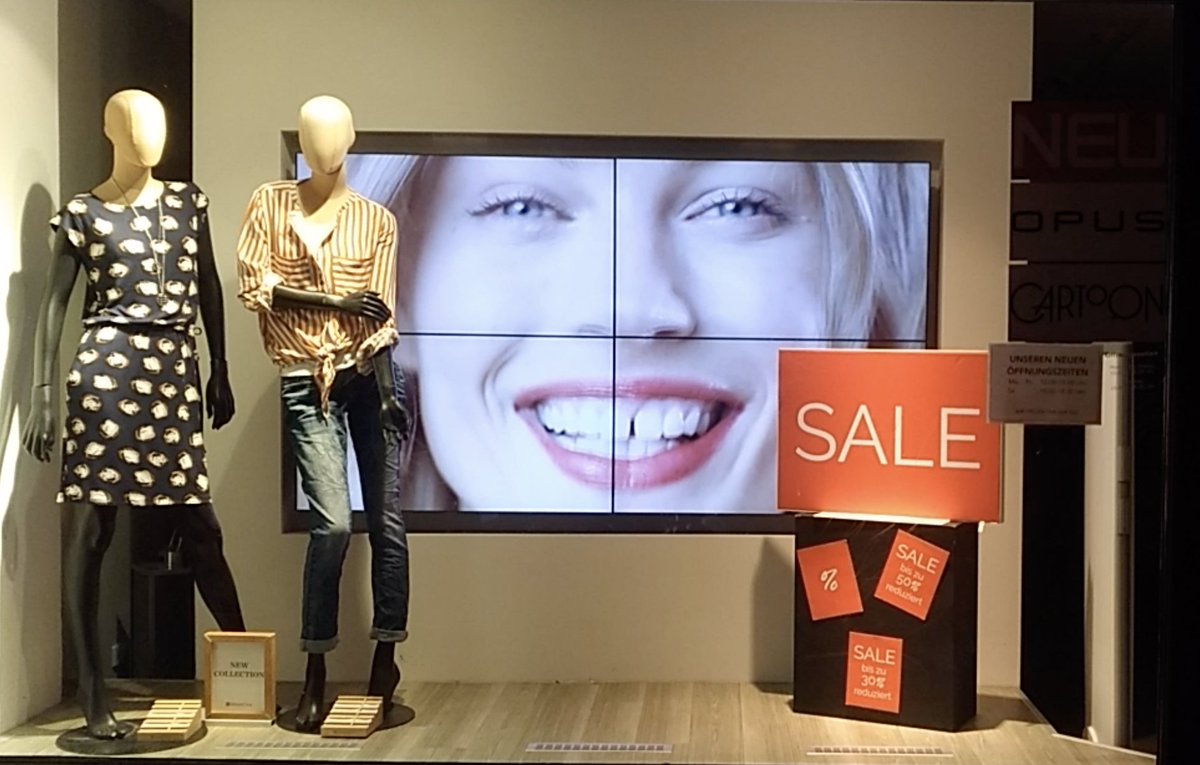
That means that if we want to have a sustainable city and reduce #LightPollution, we have to talk about more than switching streetlights to LEDs. We have to talk about setting limits on the size, number, and brightness of advertisements.
We need to talk about how many facades can and should be lit, and when they should (both which days of the year and which time of night). For this to be successful, the whole city is going to need to work together to find solutions that work for everyone.
Got a bit ahead of myself there...
Since we have a satellite image, we can actually look at how the fraction of light due to streetlights varies throughout the city. We did this by breaking the city up into hexagons with 10 square kilometer area. 
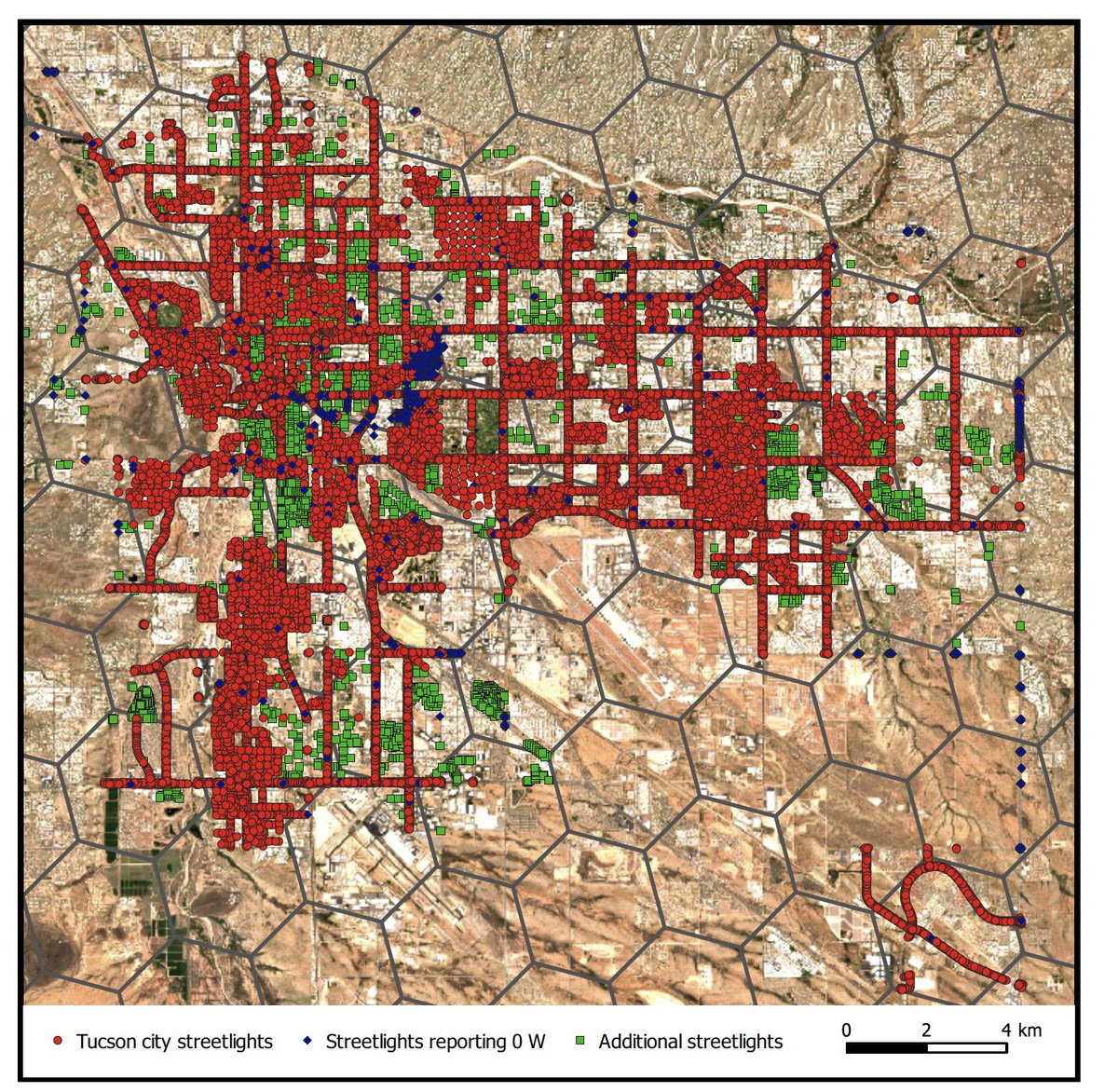
In the city center, City of Tucson lights make up only a small fraction of the total light emissions detected by satellite, whereas in the suburbs it rises up to above 30% of the total light we see. 

If you've made it this far, I assume it's ok if I tell you a few last details?
We actually tried the experiment in a whole bunch of different cities. It turns out that it's not as easy to change lights as you might like, even when a dimming system is installed. But one place it did work was in a few small German villages.
That's a totally different context than Tucson, USA, and in this case we were looking at high pressure sodium lamps instead of LEDs. But the principle is the same.
In the German villages we got a broadly similar result: on the nights when the dimming is applied as usual, more than half of the light comes from sources other than streetlights. (But here if the villages didn't dim, streetlights would be a much larger share of the total light). 
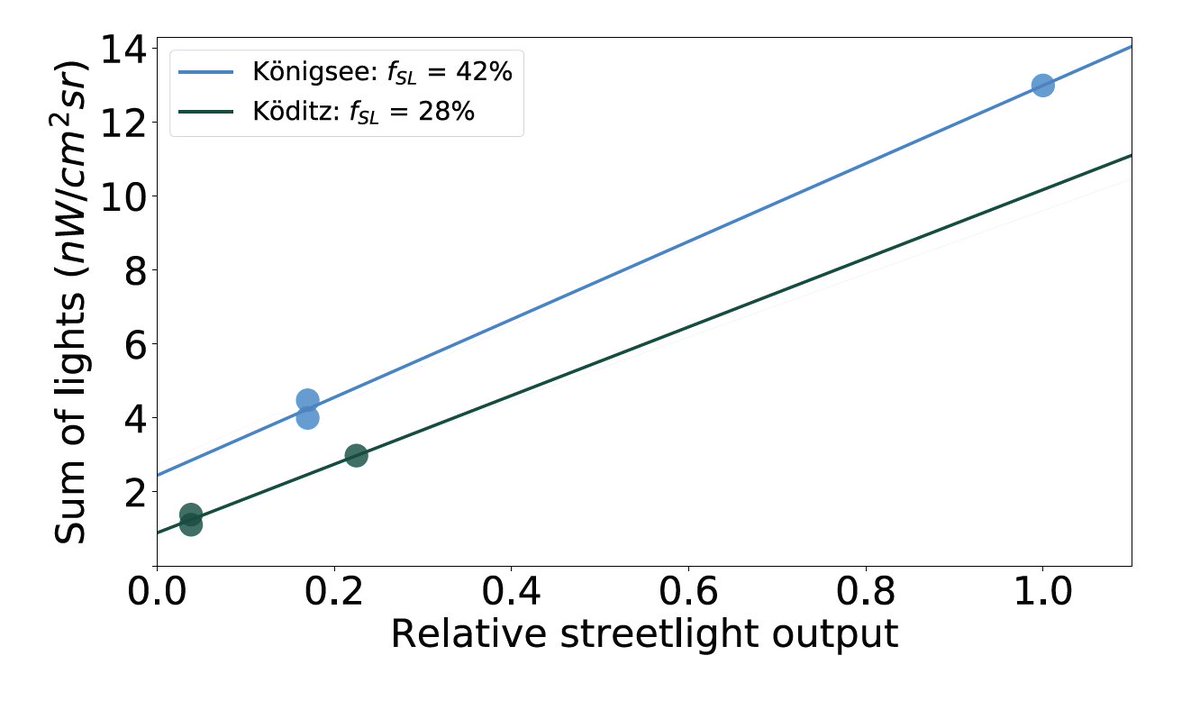
That's the end. HUGE THANKS go to @andi__ruby, who did the GIS analysis and produced nearly all of the figures in the paper (and made edit after edit to address questions of the reviewers and editor well after his internship with us had ended).
If you made it this far, it's now time to go read the paper. There's a ton of more stuff in there, like how we dealt with calibration issues, and "sanity check" experiment in Ireland. Here's the link again: doi.org/10.1016/j.jqsr…
(We are working on an #OpenAccess version...)
(We are working on an #OpenAccess version...)
The #OpenAccess version should be available here within a few days: gfzpublic.gfz-potsdam.de/pubman/faces/V…
And for a journalist's take on the whole story, check out this from @Vic_Gill
https://twitter.com/Vic_Gill/status/1321727978716495879
"But wait, there's more" part 2...
At the same time as we arranged this experiment, @JohnBarentine made observations of skyglow from a number of locations on the ground. The work led by John is published here: sciencedirect.com/science/articl…
Open access version: arxiv.org/abs/2005.12357
Open access version: arxiv.org/abs/2005.12357
Measuring the contribution to skyglow is more difficult, because the sky mixes the light from the entire metro area. So John's team took two approaches. One based on modeling, and one on measurement.
I prefer the measurement version (big shock, I'm an experimentalist). There we found that at the sites studied, streetlights were only responsible for 2-3% of the skyglow!
There is still work to be done, especially regarding light outside of cities. But well-designed streetlights don't emit light towards the horizon (worst for skyglow), while lit advertisements, car headlights, etc. do.
So once your city has well designed streetlights (only shining down, not too bright, reduced blue emissions), it's possible that ***nearly all the skyglow*** comes from sources other than streetlights.
• • •
Missing some Tweet in this thread? You can try to
force a refresh


